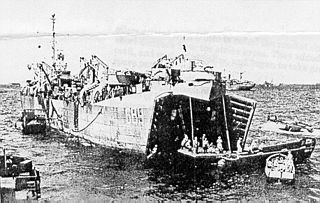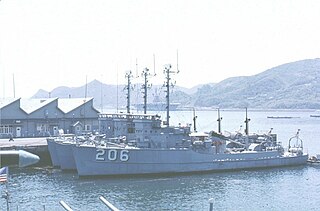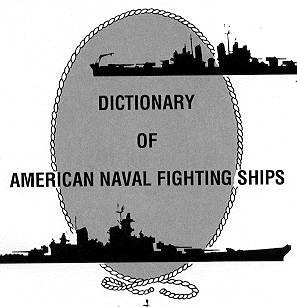
USS Sides (FFG-14) is an Oliver Hazard Perry class guided-missile frigate that served in the US Navy.

USS John A. Moore (FFG-19), eleventh ship of the Oliver Hazard Perry class of guided-missile frigates, was named for Commander John Anderson Moore (1910–1944). Ordered from Todd Pacific Shipyards, Los Angeles Division, San Pedro, California on 28 February 1977 as part of the FY77 program, John A. Moore was laid down on 19 September 1978, launched on 20 October 1979, and commissioned on 14 November 1981.

USS Numitor (ARL-17) was to be laid down as an LST-542-class tank landing ship but was instead laid down as one of 39 Achelous-class repair ships landing craft repair ships built for the United States Navy during World War II. Named for Numitor, she was the only US Naval vessel to bear the name.

RBNS Sabha is a frigate now in service with the Royal Bahrain Naval Force. The ownership was transferred to Bahrain as a gift on 13 September 1996. The frigate was ordered by the US Navy on 28 February 1977, and laid down on 25 February 1980. It was officially launched by the US Navy on 30 August 1980. The frigate is now considered as the lead frigate of the Royal Bahrain Naval Force.
USS Roselle (AM-379) was an Auk-class minesweeper acquired by the United States Navy for the dangerous task of removing mines from minefields laid in the water to prevent ships from passing. She was the second United States Navy warship to be so named.
The second USS Scoter (AM-381) was an Auk-class minesweeper acquired by the United States Navy for the dangerous task of removing mines from minefields laid in the water to prevent ships from passing.
USS Skill (AM-115) was an Auk-class minesweeper acquired by the United States Navy for the dangerous task of removing mines from minefields laid in the water to prevent ships from passing.
USS LST-872 was an LST-542-class tank landing ship in the United States Navy. Like many of her class, she was not named and is properly referred to by her hull designation.
USS LST-1108 was an LST-542-class tank landing ship in the United States Navy. Like many of her class, she was not named and is properly referred to by her hull designation.

USS LST-689 was an LST-542-class tank landing ship built for the United States Navy during World War II. Late in her career she was renamed Daggett County (LST-689)—after Daggett County, Utah, the only U.S. Naval vessel to bear the name—but never saw active service under that name.
USS Challenge (ATA-201) was a Sotoyomo-class auxiliary fleet tug acquired by the United States Navy for service during and after World War II.
USS Jackdaw (AMS-21/YMS-373) was a YMS-1-class minesweeper of the YMS-135 subclass built for the United States Navy during World War II. She was the third U.S. Navy ship to be named for the jackdaw.
USS Penobscot (ATA-188/ATR–115) -- a Sotoyomo-class auxiliary fleet tug—was originally placed in service by the U.S. Navy as USS ATA–188 until she was renamed USS Penobscot (ATA-188) 16 July 1948. She served in the Pacific Ocean during World War II, and on the U.S. East Coast after the war’s end. She was finally decommissioned in 1971.

Aircraft carriers have their origins during the days of World War I. The earliest experiments consisted of fitting temporary "flying off" platforms to the gun turrets of the warships of several nations, notably the United States and the United Kingdom. The first ship to be modified with a permanent flight deck was the battlecruiser HMS Furious, which initially had a single flying-off deck forward of the original superstructure. Subsequently, she was modified with a separate "landing on" deck aft and later with a full flush deck. Other ships, often liners, were modified to have full flush flight decks, HMS Argus being the first to have such modification begun. Those first faltering steps gave little indication of just how important the aircraft carrier was to prove to be. During the inter-war years, Japan, the United Kingdom and the United States built up significant carrier fleets so that by the beginning of World War II, they had 18 carriers between them. The 1940 Battle of Taranto and the 1941 Attack on Pearl Harbor in retrospect showed the world that the aircraft carrier was to be the most important ship in the modern fleet. Today, aircraft carriers are the capital ships of the navies they serve in, and in the case of modern US "supercarriers", they embark an airgroup that is effectively a small air force.
USS Hoel (DD-768) was a planned United States Navy Gearing-class destroyer laid down during World War II but never completed. The ship was to be named after William R. Hoel (1824-1879), a United States Navy officer Navy Cross recipient.

USS LST-974 was an LST-542-class tank landing ship in the United States Navy. Like many of her class, she was not named and is properly referred to by her hull designation.
USS LST-1075 was an LST-542-class tank landing ship in the United States Navy. Like many of her class, she was not named and is properly referred to by her hull designation.










